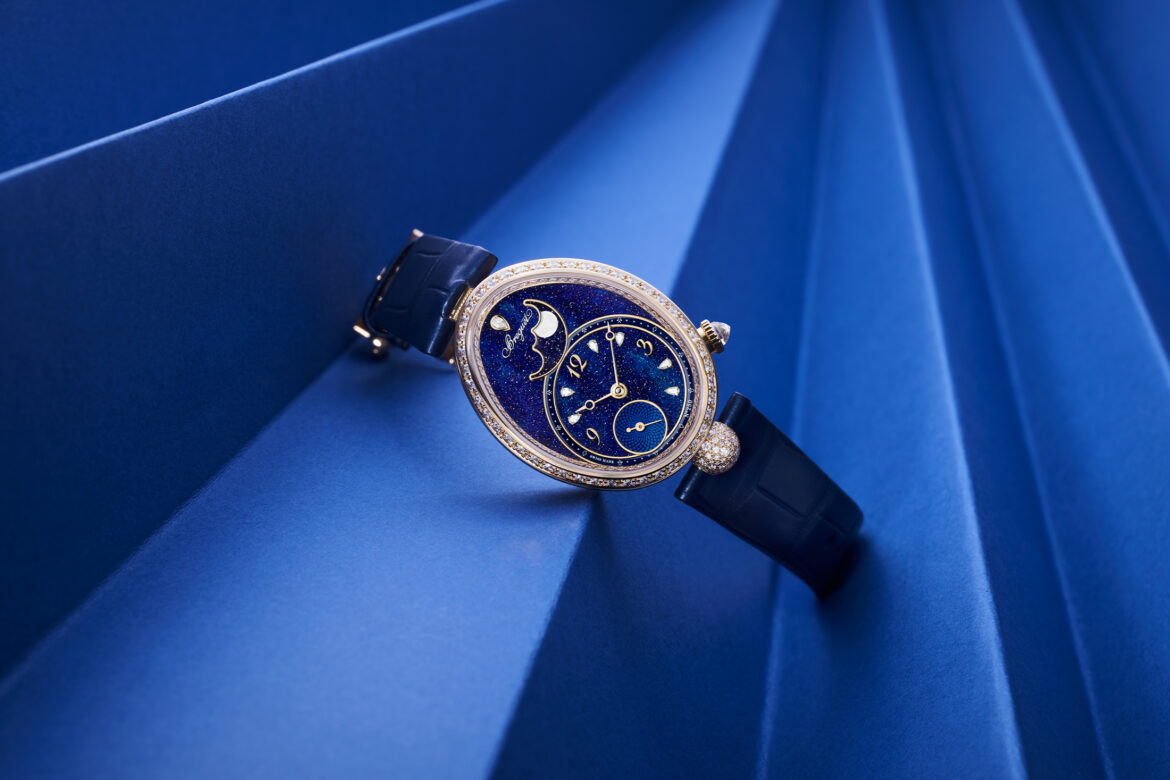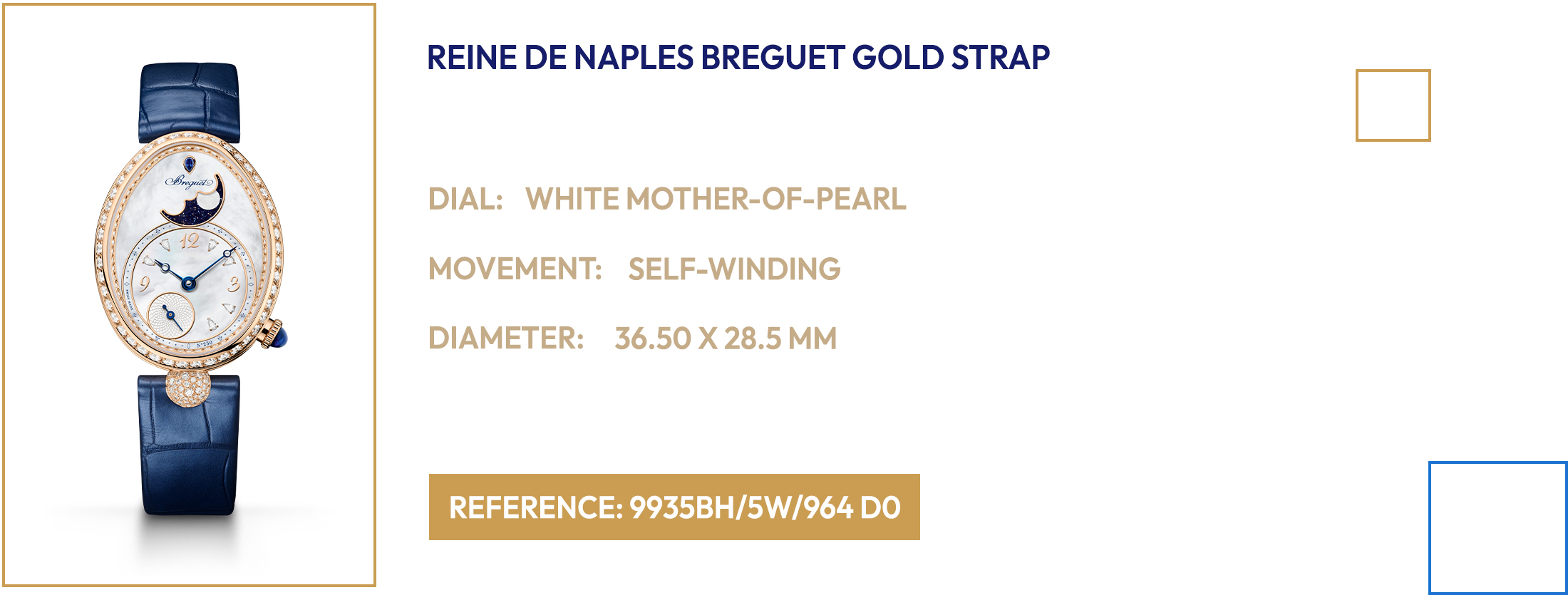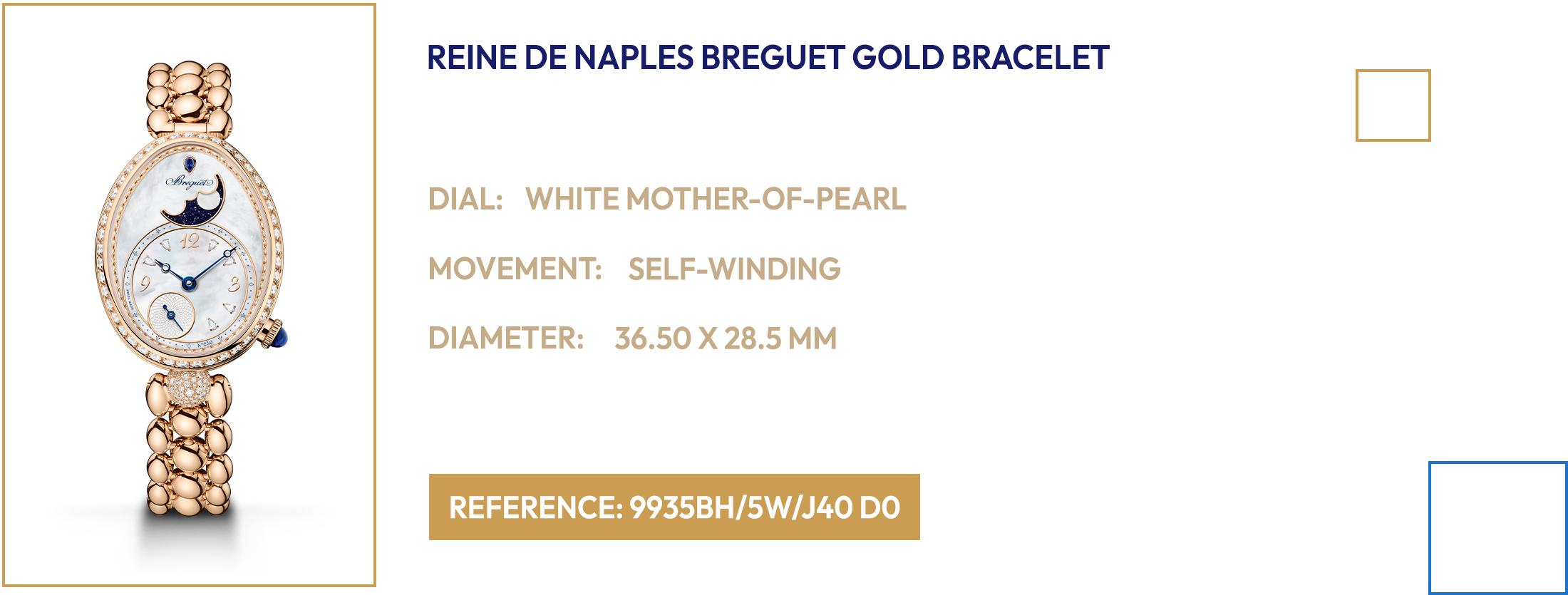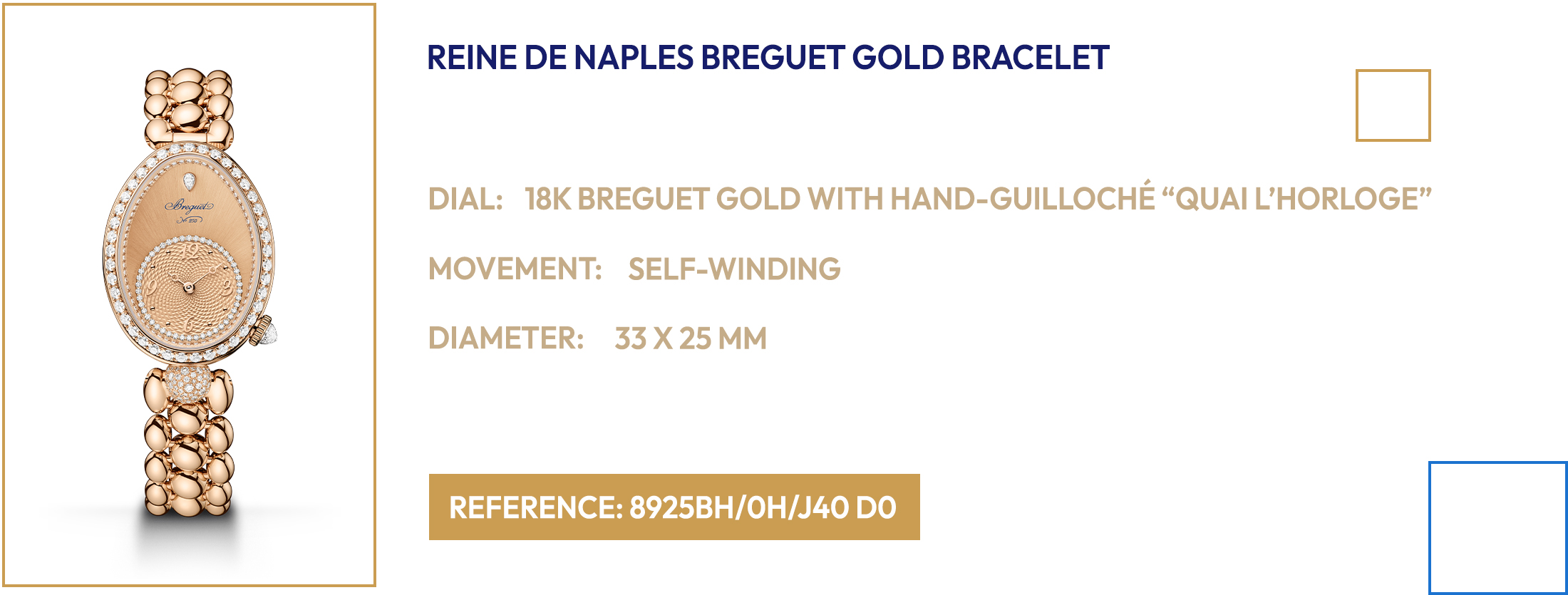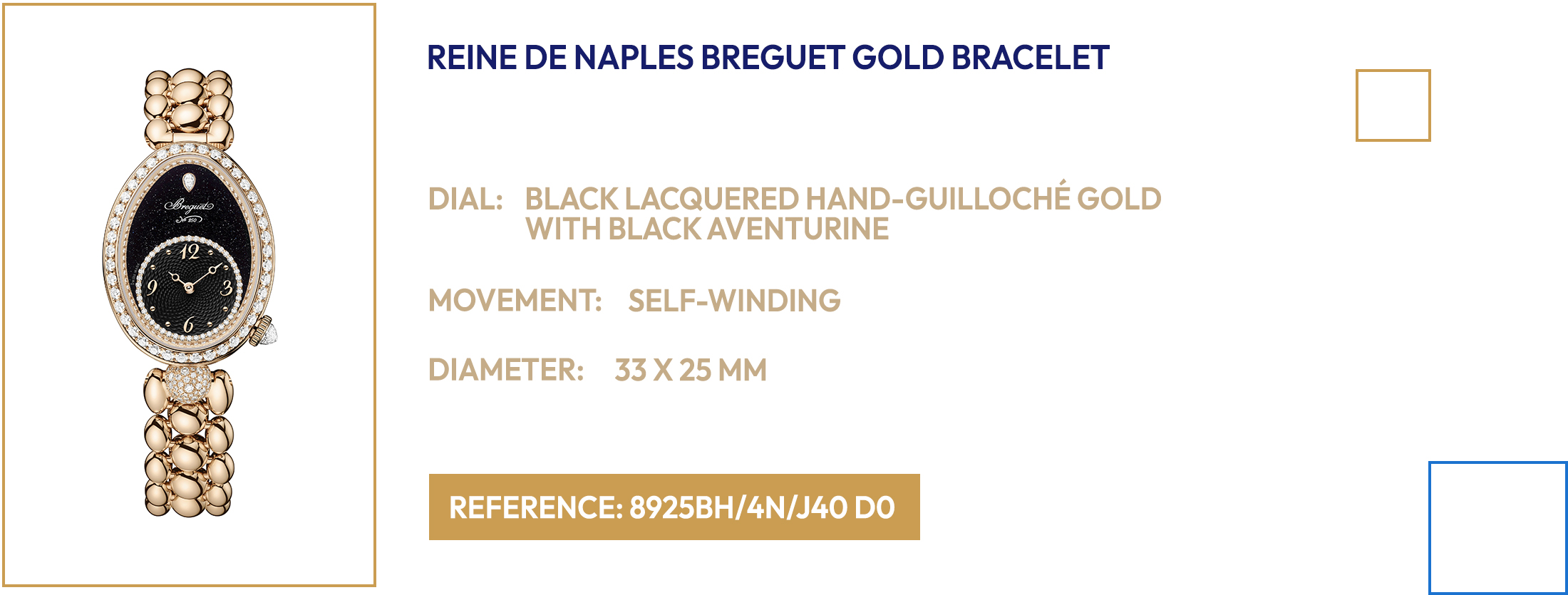This year, Breguet commemorates a remarkable achievement, 250 years of timeless innovation and exquisite craftsmanship with the unveiling of two new masterpieces: the Reine de Naples 9935 and Reine de Naples 8925.
To truly appreciate how Breguet reached its revered status today, one must explore a rich tapestry of history and craftsmanship. This is all thanks to its visionary founder Abraham-Louis Breguet who in 1775 opened his own workshop on the Quai de l’Horloge in the Île de la Cité, Paris.
He is the inventor of the tourbillon a complication designed to counteract the effects of gravity on a watch’s accuracy. To do this he devised a rotating cage mechanism that held the escapement and balance wheel, which, by rotating once per minute, mitigated positional errors and improved precision.

To commemorate the year Breguet established the Maison, two exceptional timepieces are revealed, the Reine de Naples references 9935 and 8925. The 9935 introduces a new movement, an original display, and a host of aesthetic refinements. While the 8925 showcases a refreshed face complemented by an elegant all-gold bracelet. For the first time, each of these distinguished references is adorned with Breguet’s signature gold, elevating them to both jewellery and horology treasures.
But why Reine de Naples?
It is a tribute to one of A.-L. Breguet’s iconic clients who was particularly dear to the House. Caroline Murat, Queen of Naples and Napoleon’s younger sister, discovered Breguet in 1806 at the age of just 23 and became the most loyal client in its history, acquiring no fewer than 34 watches and clocks.
Emmanuel Breguet, the seventh generation of the founder

Emmanuel now oversees the archives stored in the Breguet Museum in Paris, Place Vendôme, and the Breguet museums in Zurich and Shanghai. He added that Caroline was not the only one in her family: her brother Napoleon I had been a customer since 1798, as had her brothers Louis, Joseph and Jérôme, her sisters Pauline and Elisa as well as her sister-in-law Empress Josephine.
Caroline’s close friendship with Breguet during this time gave rise to the first watch specially designed to be worn on the wrist. Commissioned in 1810, paid for in 1811 and delivered in 1812, it was revolutionary in conception: an ultra-thin repeating watch, oblong in shape, equipped with a thermometer and mounted on a wristlet of hair entwined with gold thread.
During the summer of 1813, when the European crisis was at its most acute and the firm had lost its best clients, Queen Caroline bought a further 12 watches (eight repeating and four simple), thus providing a much-needed boost to the firm’s funds at a moment when it was the least expected.
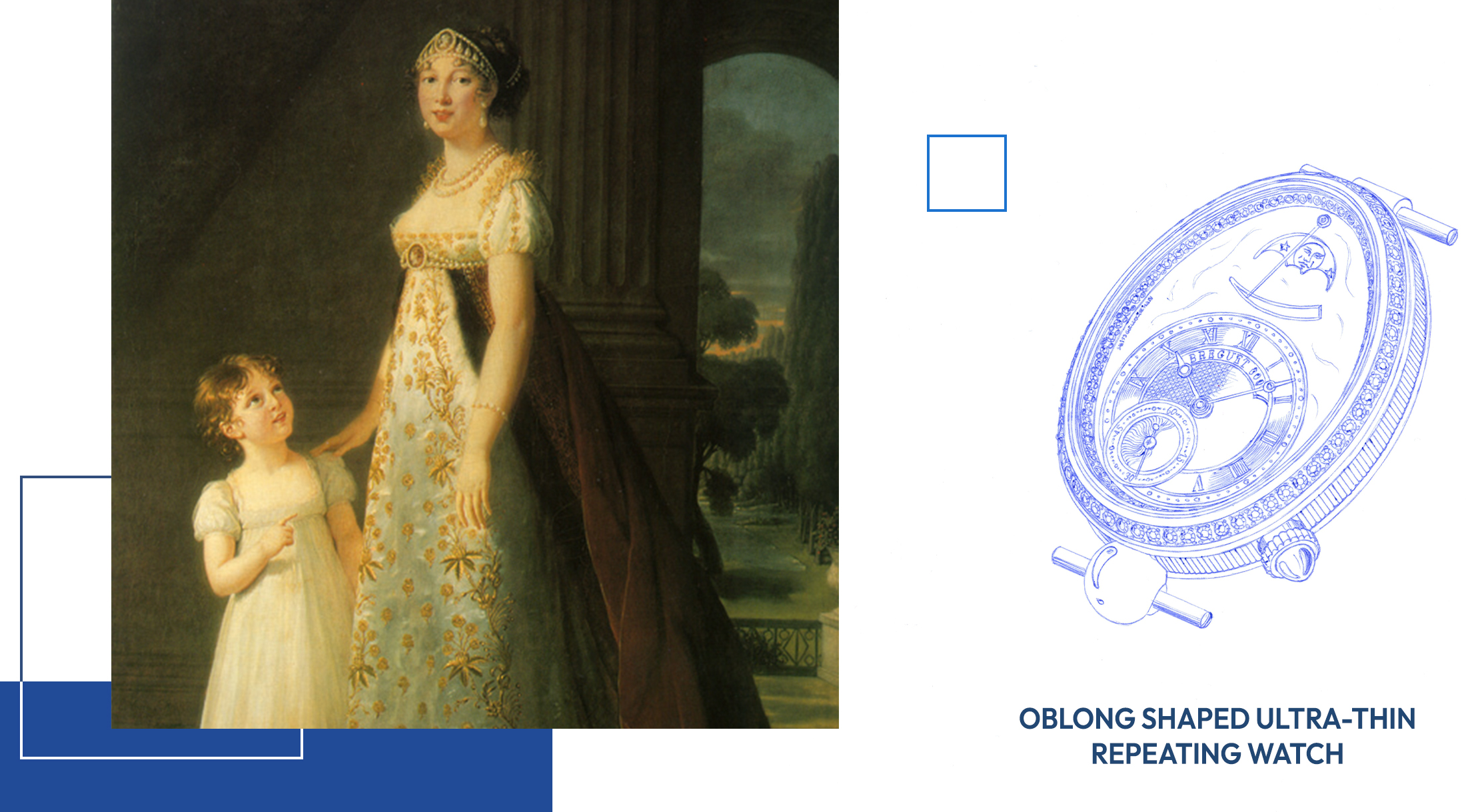
Caroline also completed her collection with several thermometers and barometers and several dozen commercial watches: modestly priced pieces intended as gifts. While the original design of the watch no longer exists, the register from the Quai de l’Horloge workshops provides us with information on two fundamental elements.
Firstly, its oblong shape that motivated the contemporary collection. Secondly, that it was specifically a wristwatch, making it probably the first ever designed as such in the history of watchmaking. This marks a significant moment for the Maison as it clearly shows that this marks the beginning of Breguet’s bond with its female clientele.
It also marks the very first wristwatch created by Breguet.
The order from the Queen of Naples, which became No. 2639 in Breguet’s production, was given the unusual name “repeater in oblong form for bracelet”. Production of this timepiece began on 11 August 1810 and was completed on 21 December 1812. The production register also tells us that this watch had a lever escapement and a thermometer, as well as being fitted with a gold-trimmed hair bracelet.
Emmanuel Breguet, the seventh generation of the founder. Author of the tome Breguet: Watchmakers Since 1775

Since its very beginnings, the Maison has created timepieces for women, from the first wristwatch to the legendary “Marie-Antoinette” pocket watch, regarded for nearly a century as the most complicated in the world. Faithful to this heritage and ever attentive to the expectations of its clients, Breguet now launches this emblematic line with a new bracelet, created for the anniversary References 8925 and 9935.
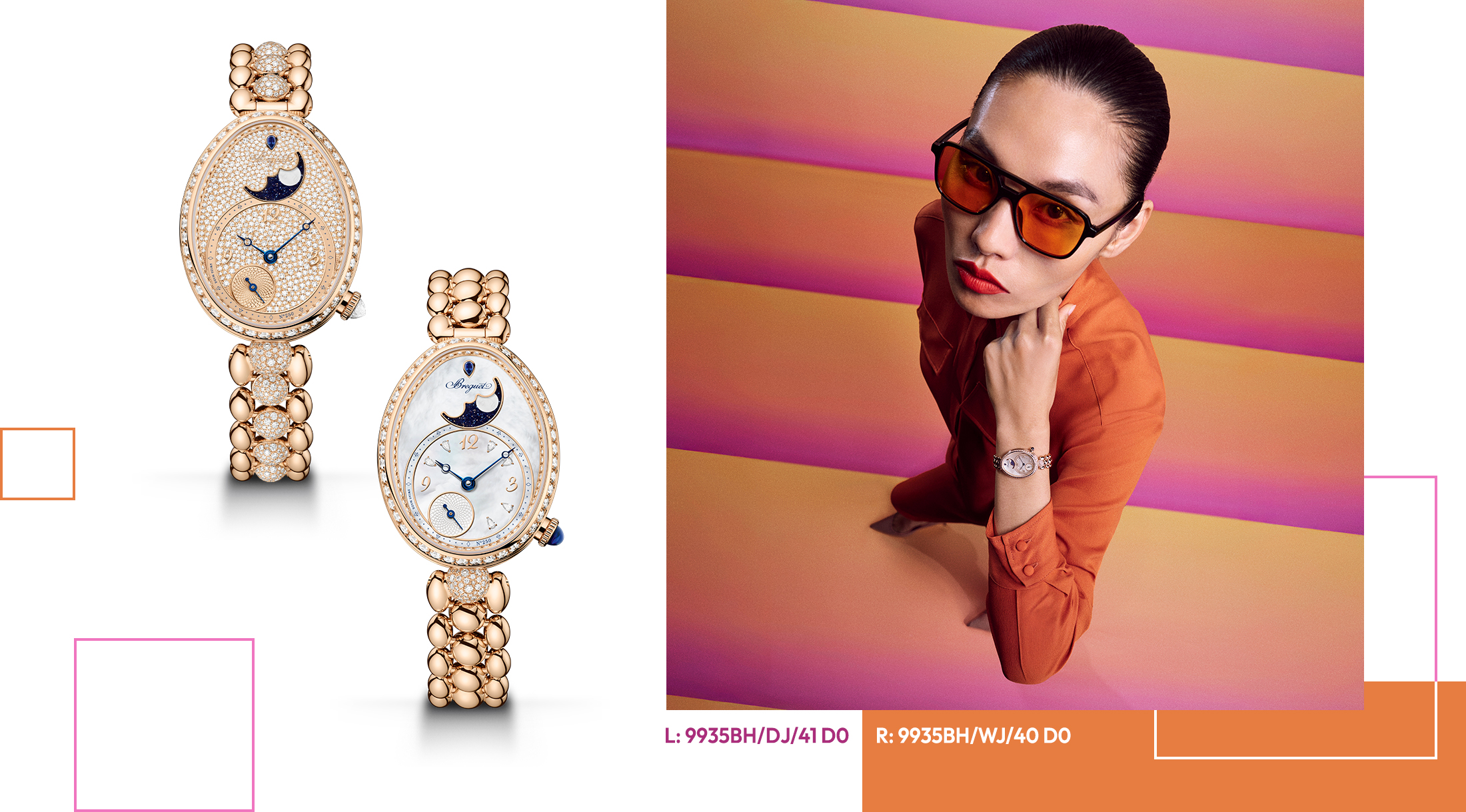
To create these exquisite pieces, Breguet drew inspiration from an existing model’s case, incorporating a reimagined movement with a larger, enhanced moon phase. For the first time in the Reine de Naples line, the moon-phase model does not have the power-reserve indicator, turning the focus on hours, minutes, small seconds, and the moon phase.
Without the power-reserve complication, the moon-phase display is given a bigger role as it fills the spacious 36.5 mm case. For the first time six pear-shaped diamonds are delicately set between the applied gold Breguet Arabic numerals.
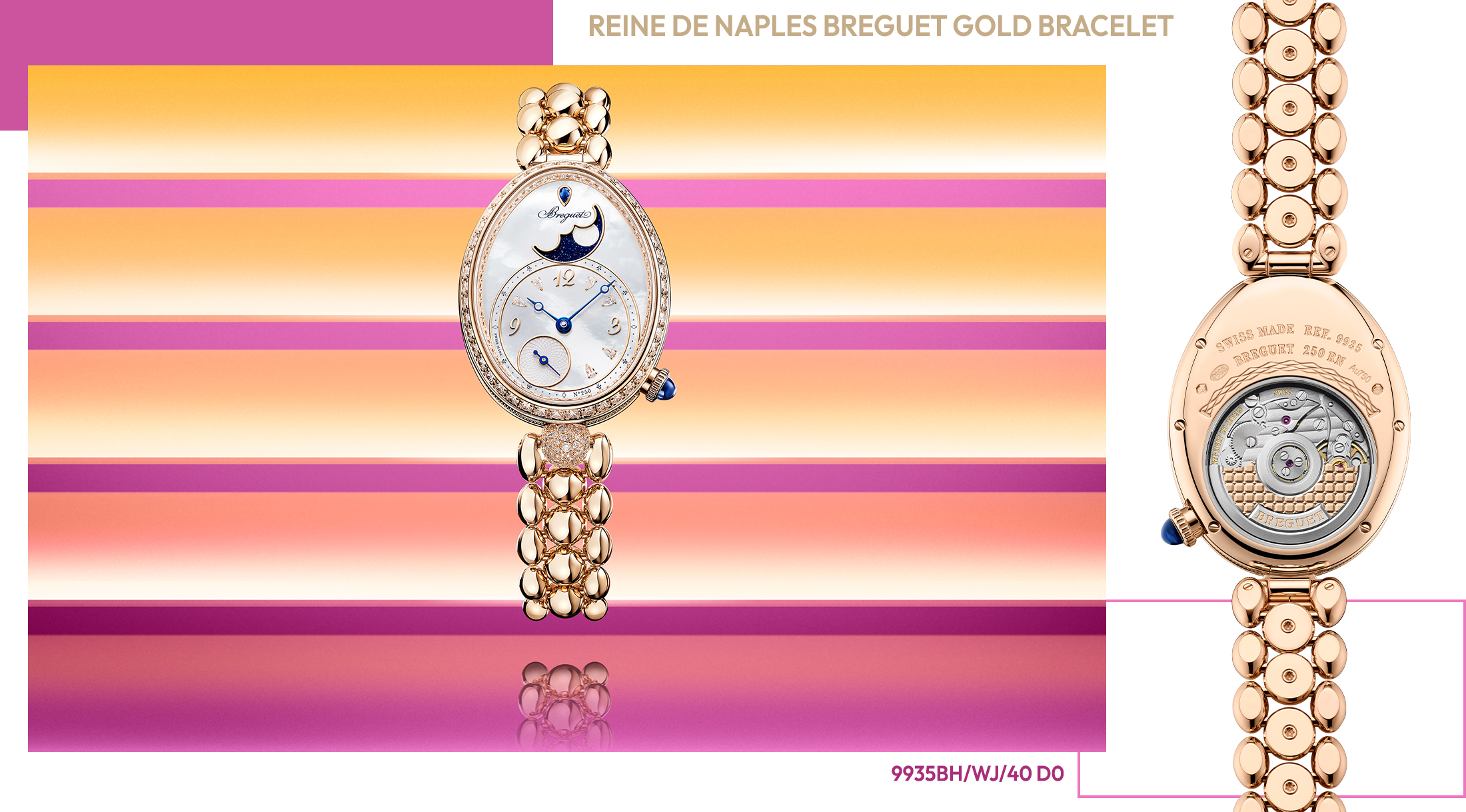
On the caseback, the watch is inscribed with “BREGUET 250 YEARS” engraved on the sapphire crystal, to reveal an oscillating weight crafted from 950 platinum, adorned with a finely detailed Breguet gilding and a new hand-guilloché “Petit Trianon” motif created specifically for this line. The caseback itself has a circular hand-guilloché “Quai de l’Horloge” pattern, adding a touch of artistic finesse.
To complement this innovative design, Breguet has developed three distinct dials for Reference 9935, with the most striking featuring a two-level design housed within a Breguet gold case.
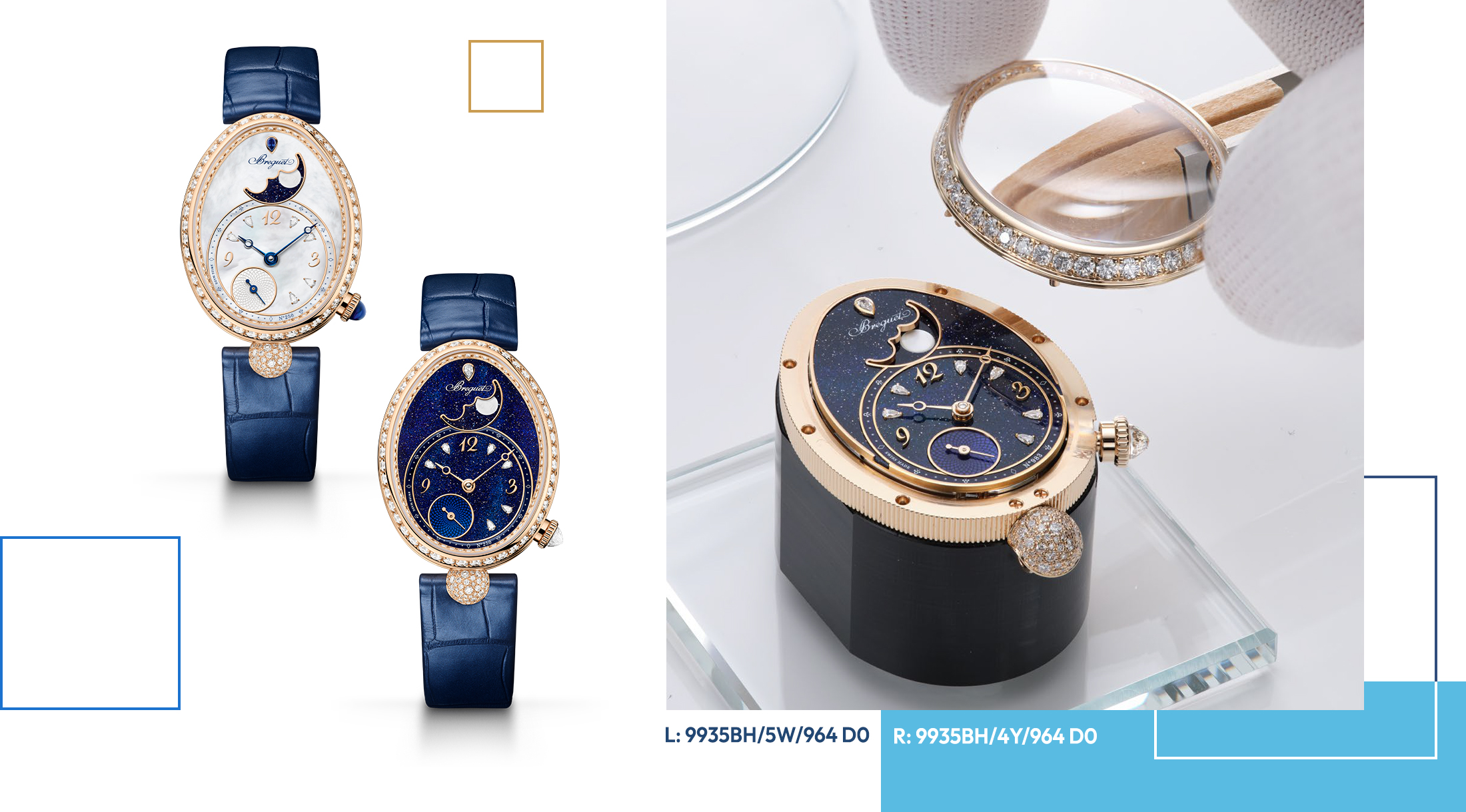
The upper level showcases aventurine glass, a material invented by a Murano glassmaker who accidentally dropped copper crystals into molten glass, this gave rise to a process that gives each piece a unique, unpredictable appearance. Today, Breguet’s version is treated in an elegant shade of blue that reveals a thin plate of Tahitian mother-of-pearl, prized for its natural iridescence, creates a captivating play of light reminiscent of the aurora borealis, shifting beautifully with the wearer’s movement. This interplay enhances its celestial theme that shows the moon phase against the darkness of night.
The moon is crafted from white mother-of-pearl with a gentle domed shape, set against a disc of blue aventurine glass for added glow, an exclusive first for the Reine de Naples collection. This disc conceals a secret signature, visible only to the owner, with the white traces of the night star subtly visible beneath the mother-of-pearl.
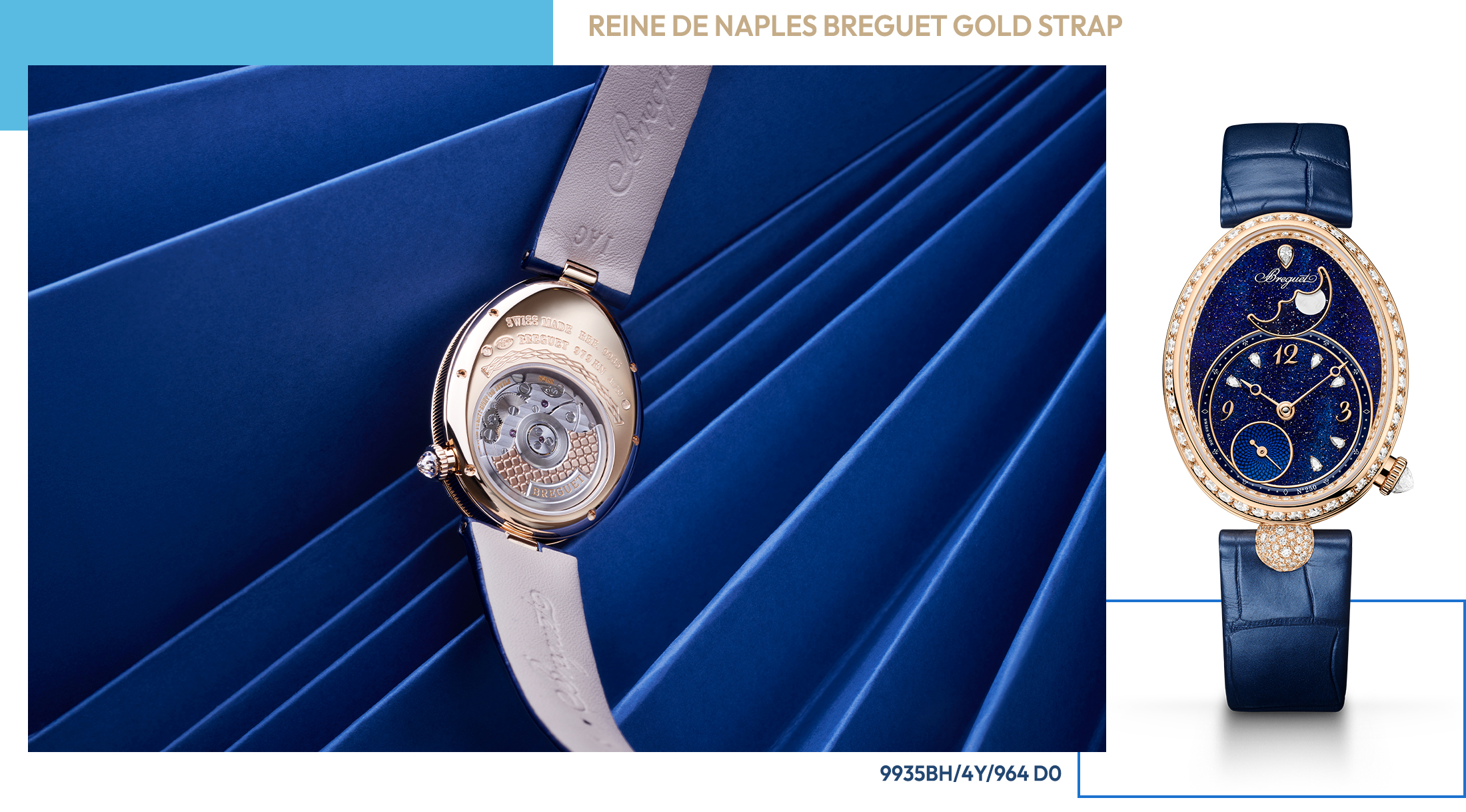
The case, crafted in Breguet gold, features an elegant round central lug at 6 o’clock, set with diamonds, echoing the design of the new bracelet. Inspired by the characteristic oblong form and the pearls cherished by Caroline Murat, the bracelet’s design is both aesthetic and keeping with the collection’s heritage.
Two versions of the watch are available with this bracelet: one with a white mother-of-pearl dial, and another entirely paved with 1,451 diamonds totalling 5.7 carats. The aventurine glass model is paired with a blue satin-effect alligator leather strap, which is also available for the white mother-of-pearl variant.
The Reine de Naples 9935 is the first fully feminine model that features a special inscription commemorating this historic occasion, and all four variants of the 9935 are now part of the current collection.

In the late 18th century, Abraham-Louis Breguet established an aesthetic language to emphasise clarity and legibility. Reference 8925 pays homage to this legacy with a self-winding watch that displays only the hours and minutes. The bezel has a denser setting, increasing from 37 to 41 diamonds, a clear indication of the Maison’s expertise in jewellery setting.
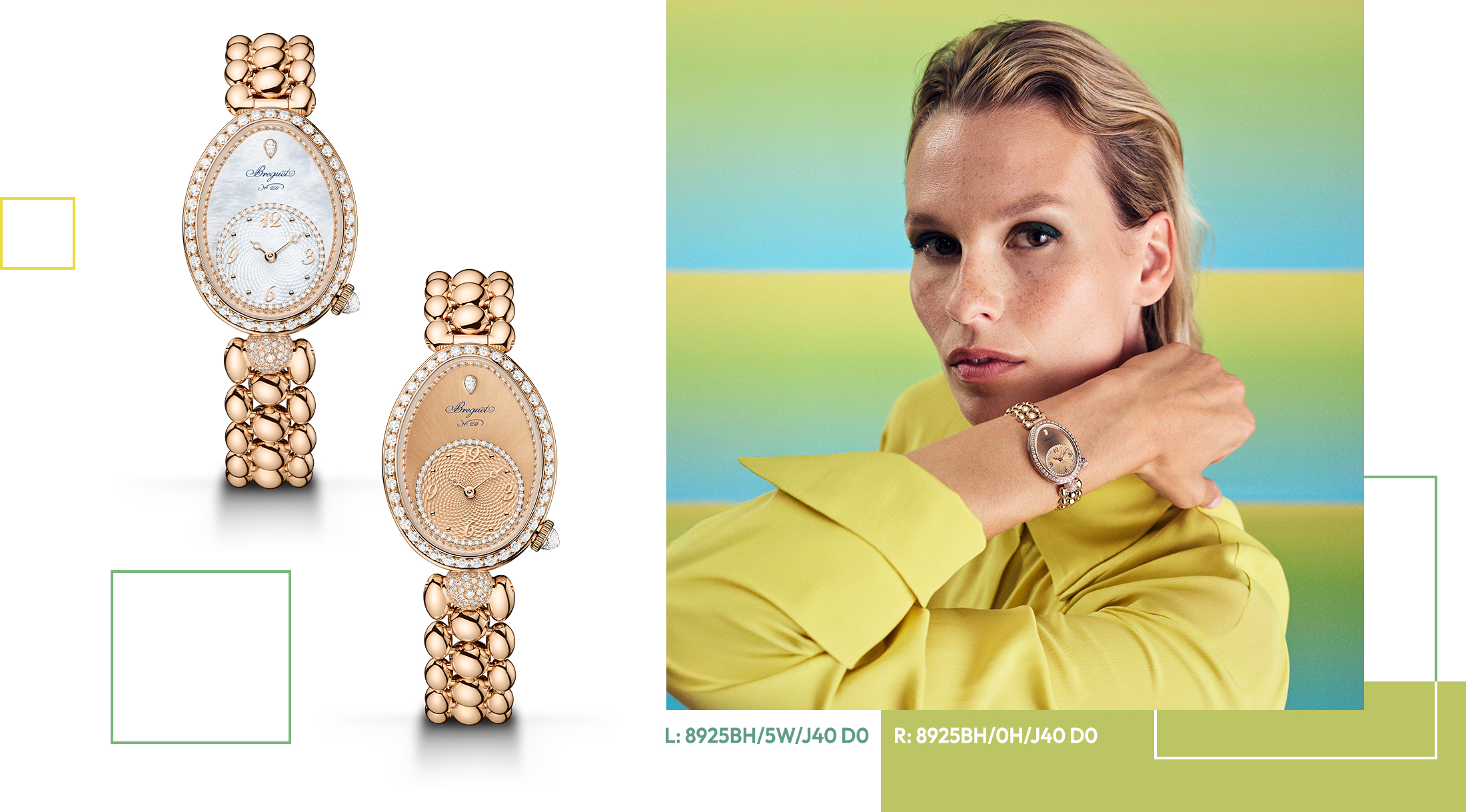
This model is exclusively paired with a gold Breguet bracelet, articulated at the round central case lug and adorned with snow-setting for the first time. To breathe new life into the 8925, Breguet offers three distinct dial options.
The first features an ultra-white mother-of-pearl, radiating with bold clarity. Its offset chapter ring is accented by gold Breguet Arabic numerals on a circular “Quai de l’Horloge” guilloché background.
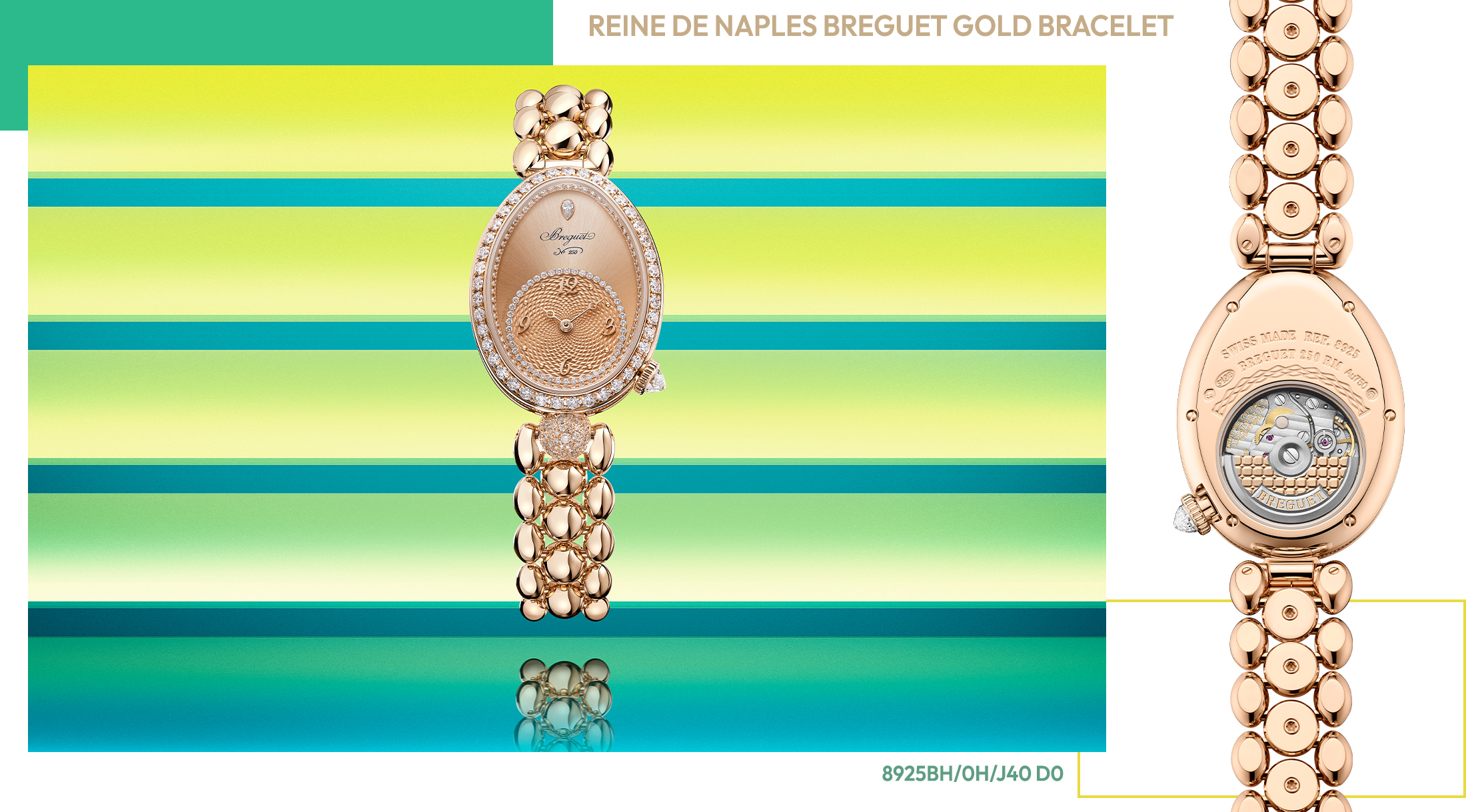
The second highlights a distinctive expression of Breguet gold, which is prominently present on nearly every part of the watch: the bracelet, the fluted case, and the finely guilloché chapter ring, set against a sunburst-brushed dial.
The third option plays with contrast, featuring a guilloché chapter ring seen through a midnight blue aventurine glass plate that covers the entire dial, creating a mysterious and elegant effect.
All versions are crowned with a pear-shaped diamond at 12 o’clock, positioned just above the signature of the Maison, adding a final flourish of refined luxury.

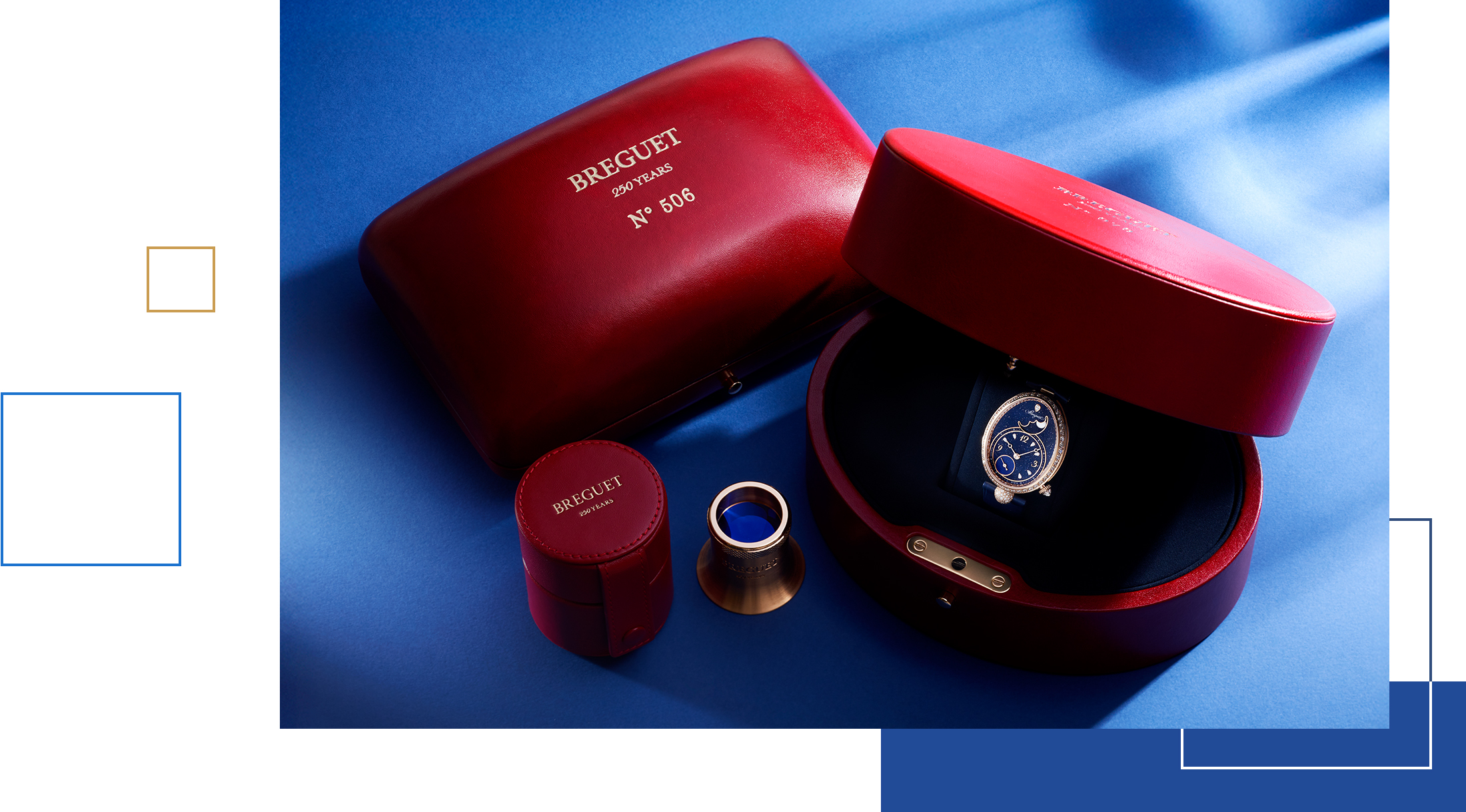
The art of giving reaches a new level with two exceptional timepieces, the Reine de Naples references 9935 and 8925, each deserving to be presented in their own exquisite boxes. These meticulously crafted containers feature a single-button opening, a thoughtful tribute to the legendary red Moroccan leather cases once cherished by Abraham-Louis Breguet himself. Renowned for its softness, durability, and distinctive grain, Moroccan leather adds a warm and luxurious touch, elevating the ritual of gifting into an elegant moment rooted in heritage and grace.
Feature and additional stylised images by GreenPlasticSoldier for Curatedition. Brand images courtesy of Breguet, artwork by Curatedition. All rights reserved.
Related links:
Breguet: Pioneering Watchmaking Through The Ages
Breguet Reine de Naples: Ahead of the Curve
Breguet: Centre of the Horological Universe

